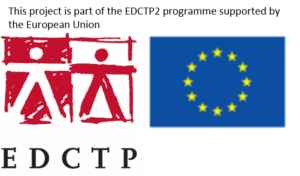Coordinator’s Word
Malaria continues to be a major health problem, particularly in sub-Saharan Africa where 92% of the 219 million new cases and 93% of the 435 000 deaths from malaria were recorded in 2017 according to the WHO 2018 report. The disease is responsible for an unacceptable number of hospital admissions and outpatient visits and greatly contributes to poverty in most of sub-Saharan Africa. With the development of artemisinin resistance in Southeast Asia, and the risk of expansion to the sub-Saharan Africa region, there is an urgent need for a non-artemisinin-based drug combination for malaria treatment. So far, there are limited numbers of drug candidates and combinations in the pipeline that are not artemisinin-based.
Ganaplacide/lumefantrine is one of the leading candidates for antimalarial treatment. Ganaplacide belongs to a novel class of drugs called imidazolepiperazines, discovered as part of a Wellcome Trust, Medicines for Malaria Venture (MMV) and Singapore Economic Development Board-supported joint research programme with the Novartis Institute for Tropical Diseases, the Genomics Institute of the Novartis Research Foundation and the Swiss Tropical and Public Health Institute, and developed by Novartis with support from MMV. Its structure is different from currently marketed antimalarial drugs and other antimalarial drug candidates under development. Due to the unique mode of action of ganaplacide against Plasmodium species, possibly via a PfCARL mediated mechanism, it has already demonstrated pre-clinically and clinically the potential to be active in parasites resistant to current antimalarials. Combined with re-formulated lumefantrine that has demonstrated to yield plasmodicidal drug levels up to day 7 and beyond, the combination is predicted to clear any residual parasites. In addition, the potency of the molecules will allow for once-daily dosing and thereby improve patient compliance. Finally, ganaplacide has transmission blocking properties, rendering it potentially useful for use in malaria eradication programs.
As part of the EDCTP-sponsored WANECAM 2 programme (grant number RIA2017T-2018), two clinical trials will be performed in Burkina Faso, Gabon, Mali and Niger, one phase IIb trial in children from 6 months to 12 years and one phase 3 trial in children from 6 months and older and adults. Recruitment is expected to start in 2020. Research capacities in Africa will be strengthened and expanded, assisted by research institutes from Europe. Wanecam I focused on the safety of ACT (artemisinin-based combination therapy) after repeated treatment, Wanecam II will build further on this.

